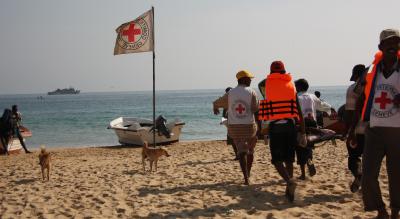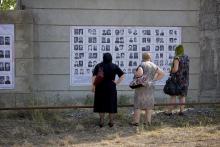Basic international humanitarian law (IHL) rules applicable to this situation:
Whenever possible, and particularly after an engagement, each party to the conflict must, without delay, take all possible measures to search for, collect and evacuate the wounded, sick and shipwrecked without adverse distinction.
The wounded, sick and shipwrecked must receive, to the fullest extent practicable and with the least possible delay, the medical care and attention required by their condition. No distinction may be made among them founded on any grounds other than medical ones.
The parties to the conflict must allow and facilitate rapid and unimpeded passage of humanitarian relief for all civilians in need, without distinction, subject to their right of control.
The parties to the conflict must ensure that authorized humanitarian relief personnel have the freedom of movement they need to carry out their work.
The case in brief
In 2009 there was an escalation of violence in a longstanding armed conflict between Sri Lankan government forces and the Liberation Tigers of Tamil Eelam (LTTE), a non-state armed group. Fierce fighting in the north of the island caused thousands of casualties and left medical facilities without the staff and supplies required to properly treat the wounded and sick. Civilians became trapped in conflict-affected coastal areas without safe routes of escape.
With the agreement of both parties to the conflict, the Sri Lankan Navy and the ICRC conducted a series of sea evacuations, transporting the wounded and sick to fully functioning hospitals in safer parts of the country.
IHL compliance highlights
- Recognizing its humanitarian obligations towards conflict-affected civilians and wounded and sick combatants, the Sri Lankan Navy established comprehensive evacuation measures in cooperation with the ICRC, deploying naval personnel and vessels with standby rescue and medical teams in conflicted-affected seas.
- Between 10 February and 14 April 2009, Sri Lankan naval ferries chartered by the ICRC safely evacuated more than 7,000 people from Putumattalan, a conflict-affected area lacking functioning medical facilities, to Trincomalee. There wounded and sick evacuees were able to receive appropriate treatment at adequately equipped hospitals staffed by Health Ministry and specialist ICRC medical personnel.
Case prepared by Angèle Jeangeorge, LL.M. student at Leiden University under the supervision of Professor Robert Heinsch as well as Sofia Poulopoulou and Christine Tremblay, PhD researchers, Kalshoven-Gieskes Forum, Leiden University; with the contribution of Jemma Arman and Isabelle Gallino, LL.M. students at the Geneva Academy.






